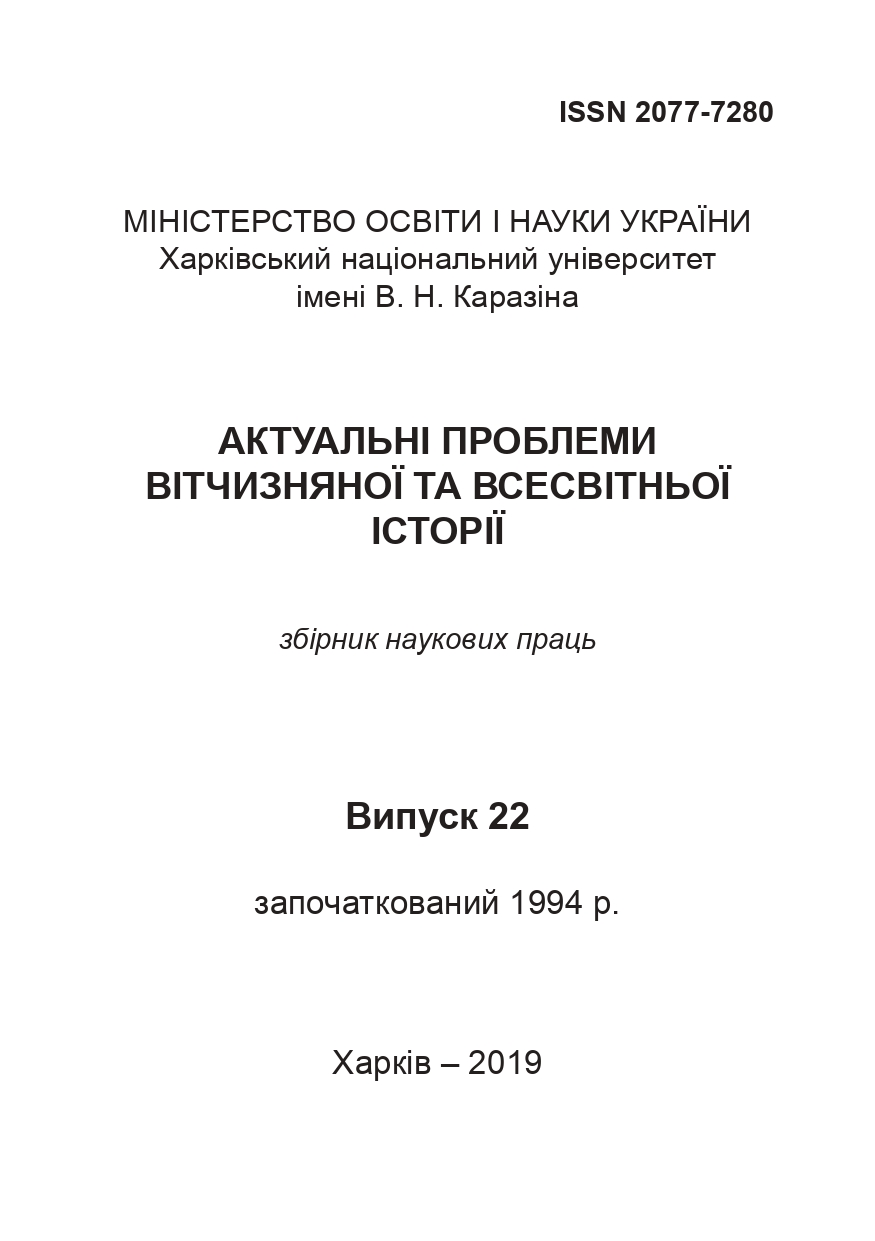Робітничий клуб як місце презентації радянського режиму: агітація, розвага, гра
Анотація
Стаття присвячена дослідженню радянської пропаганди соціалістичних ідей в сфері дозвілля на прикладі харківських робітників. В статті аналізуються методика та практика проведення розважально-агітаційних ігор радянськими пропагандистами. Робиться висновок про те, що більшовики намагалися віднайти баланс між агітацією та необхідністю задовольнити тяжіння публіки до розваг.
Завантаження
Посилання
«Гвоздь программы» // Харьковский рабочий. 1935. 14 нояб. С. 2
Вительс. Поповские слезы (карты безбожника) // Рабочий клуб. 1925. № 8–9. С. 64–66.
ДАХО. Ф. 820. Оп. 1. Д. 1079. Л. 11.
ДАХО. Ф. 820. Оп. 1. Д. 1080. Л. 1.
Диденко Г. Д. Рабочий класс Украины в годы восстановления народного хозяйства (1921–1925). К., 1962.
Елизаров И. Я. Нужен ли рабочим праздник рождества. Материалы к антирождественской компании. Л., 1930.
История советского рабочего класса: в 6 т. Т. 2: Рабочий класс – ведущая сила в строительстве социалистического общества: 1921–1937 гг. М., 1984.
Клуб в день 1 Мая. М., 1924.
Коткин С. Новые времена: Советский союз в межвоенном цивилизационном контексте // Мишель Фуко и Россия: Сборник статей. СПб.; М., 2001.
Ловелл С. Досуг в России: «свободное» время и его использование // Антропологический форум. 2005. № 2. С. 136–173.
Лотман. Ю. Бытовое поведение и типология культуры в России XVII века // Культурное наследие Древней Руси. Истоки, становление, традиции. М., 1976.
Любавський Р. Повсякденне життя робітників Харкова в 1920-ті – на початку 1930-х років. Х., 2016.
Малкин Л. Техсуды как метод массовой техпропаганды // Клуб. 1933. № 13. С. 25–26.
Малышева С. Ю. Казанские «игры» 1924 года // Эхо веков. 2001. № 3–4. С. 274–281.
Тимашев Н. «Великое отступление» (Глава из книги) // Новый журнал. 2007. № 248 [Электронный ресурс]. Режим доступа: https://magazines.gorky.media. Доступ: 1.10.2019.
Не подменять большевистскую пропаганду шумихой // Харьковский рабочий. 1934. 26 апр. С. 2.
О неправильных формах комсомольской работы // Комсомольская Правда. 1934. 27 мая. С. 1 70
Организуем отдых рабочих ночных смен // Клуб. 1933. № 2. С. 18.
Паперный В. Культура два. М., 1996. С. 41–60.
Против показной шумихи // Клуб. 1934. № 9. С. 1–2.
Рольф М. Массовые советские праздники. М., 2009.
Хейзинга Й. Homo ludens. Человек играющий. СПб., 2011.
Чацький Л. М. Саносвіткнигу в маси робітників Харківського Тракторного Заводу / Л. М. Чацький // Профілактична медицина. 1930. № 9–10. С. 168–169.

